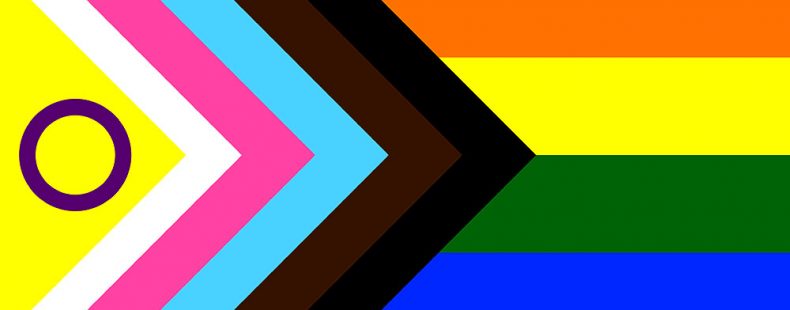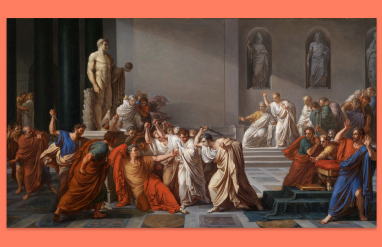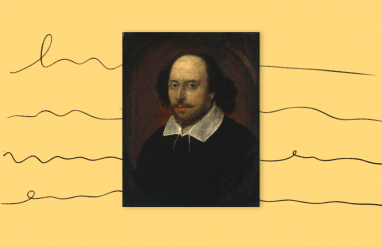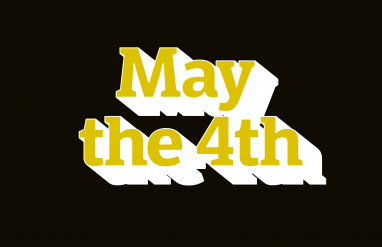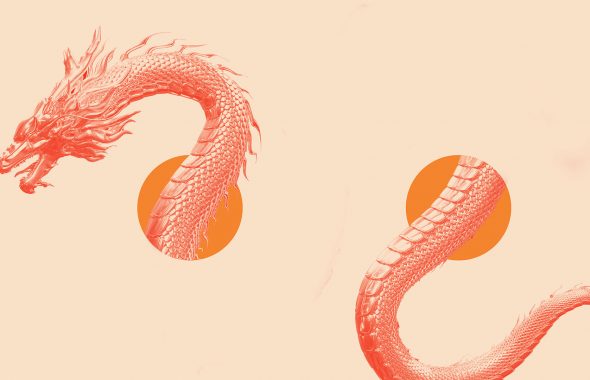A flag is a sign of community and belonging, and no flags are as eye-catching as the rainbow of banners representing Pride and all of its aspects and identities. The classic ROYGBV flag may be the most well-known, but it is not the only one that represents members of the LGBTQIA+ community.
In this article, we’ll discuss some of the most prominent Pride flags, their names, and what their colors and elements represent—as well as some of their emoji equivalents. Of course, there are far too many flags to feature in a single article—a sign of the great diversity of Pride. But we’ll also highlight some of the more recently introduced flags that represent distinct identities and communities, including some that may be new to you or that you may have first encountered during Pride Month.
🏳️🌈 Rainbow Pride Flag
The most commonly flown Pride flag is the classic rainbow design. The six-colored red, orange, yellow, green, blue, and purple flag shown above is actually a revision of the very first Pride flag.
Designed by artist Gilbert Baker in 1978, the first version of the rainbow flag included hot pink and turquoise. While it is often said that Baker was inspired by the Wizard of Oz tune “Somewhere Over the Rainbow,” in his memoir Baker says he chose the rainbow “as a symbol of peace.” The original eight colors of the flag are said by Baker to represent sex (pink), life (red), healing (orange), sunlight (yellow), nature (green), magic (turquoise), serenity (indigo), and spirit (violet). Baker modified the design in 1979, when it became the six-colored version seen above.
In 2016, the rainbow Pride flag was added to the emoji keyboard as the Rainbow Flag emoji 🏳️🌈. Petitioner Noah Slater argued in his email to the Unicode Consortium, which approves new emoji, that the flag is “a powerful and potent symbol of not only current gay rights struggles, but the history of gay rights in America.”
Progress Pride Flag
 LGBTQ+ rainbow flag Quasar “Progress” variant by Paul2520.
LGBTQ+ rainbow flag Quasar “Progress” variant by Paul2520.
The progress Pride flag builds on the six-striped rainbow Pride flag by adding a triangle on the left side of the field in stripes of black, brown, light blue, light pink, and white. This design was created by artist Daniel Quasar in June of 2018. According to Quasar, the black and brown stripes represent communities of color. The black stripe also represents those lost to AIDS and AIDS stigma. The light blue, light pink, and white stripes represent trans and nonbinary people. While previous flag redesigns included stripes of these colors, Quasar’s design made them more legible and easily recognizable.
The artist’s flag design was an overnight success—literally. Quasar posted it and woke up to find out the design had gone viral online! Today, the progress Pride flag has been widely adopted as a symbol of the LGBTQIA+ community.
Intersex-Inclusive Pride Flag
 Intersex-inclusive pride flag by Nikki
Intersex-inclusive pride flag by Nikki
The most recent update to the Pride flag was proposed by intersex writer and designer Valentino Vecchietti for Intersex Equality Rights UK in 2021. The flag builds on the progress Pride flag with a yellow triangle and a purple circle in the left of the field. This symbology is derived from the intersex flag, which was designed by Morgan Carpenter in 2013.
Yellow and purple are common colors used to represent the intersex community, as they are “an intentional counterpoint to blue and pink, which have traditionally been seen as binary, gendered colors,” explains Shar Jossell in them. According to the designer, the circle symbolizes “wholeness and completeness” in a world where intersex people “are still fighting for bodily autonomy and genital integrity.”
🏳️⚧️ Transgender Pride Flag
 Transgender Pride flag by Dlloyd and Monica Helms
Transgender Pride flag by Dlloyd and Monica Helms
The transgender Pride flag is, like the progress flag, a widely adopted symbol. It was first designed by trans activist Monica Helms in 1999. It was first flown at a Phoenix Pride parade in 2000. Helms has said that the light blue and light pink stripes represent classic gendered colors for boys and girls. The white stripe represents people who are trans or nonbinary. Today, the original transgender Pride flag is in the collection of the Smithsonian Museum of American History!
The transgender Pride flag is another Pride flag that has its own emoji. It is a relatively recent addition to the emoji catalog, having been added in 2020. Before the Transgender Flag emoji 🏳️⚧️ became available as an emoji, the Lobster emoji 🦞 was often chosen as a symbol of trans activism online, in part because lobsters can contain both male and female characteristics.
Trans-Inclusive Gay Men’s Pride Flag
 Trans-Inclusive Gay Men’s Flag by gayflagblog
Trans-Inclusive Gay Men’s Flag by gayflagblog
In addition to the widely known Pride flags, there is a large variety of flags representing different segments of the 2SLGBTQIA+ community. The 2SLGBTQIA+ acronym includes 2S, which represents two-spirit, a term used by many Native American and First Nations cultures for a person who embodies both male and female spirits within them.
Let’s take a look at just a handful of these flags, beginning with the trans-inclusive gay men’s Pride flag. The flag has three horizontal stripes of different shades of green, one white stripe, and three stripes of different shades of blue. The creator of the design, tumblr user Mod Hermy, adapted this version of the flag from an earlier design to be explicitly trans- and nonbinary-inclusive.
Lesbian Pride Flag
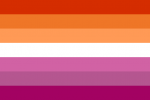 Lesbian pride flag by 2018 by L ke
Lesbian pride flag by 2018 by L ke
There have been several lesbian Pride flags over the years. Many of them feature stripes with shades of red and orange on the top and shades of purple on the bottom with a white stripe in the middle. This set of colors was first featured in the “lipstick lesbian” flag created in 2010 by designer Natalie McCray. Today, the seven- or five-stripe design created by tumblr user Emily Gwen in 2018 is most common. According to the designer, the colors represent gender-nonconformity (red), independence (orange), community (peach), “unique relationships to womanhood” (white), serenity and peace (light purple), love and sex (lavender), and femininity (purple).
Asexual Pride Flag
 Asexual Pride Flag by AnonMoos
Asexual Pride Flag by AnonMoos
Asexuality is the state or quality of being nonsexual or the absence of sex or sexuality. The flag representing asexual identity has four horizontal stripes of black, gray, white, and purple. It was created in 2010 by user standup as the winning entry of The Asexual Visibility and Education Network (ASEN) contest to create an asexual Pride flag. The colors, which are the same as the ASEN logo, represent asexuality (black), graysexuality and demisexuality (gray), non-sexual partners and allies (white), and community (purple).
From demigender to maverique, get to know some of the many terms to describe gender identity.
Nonbinary Pride Flag
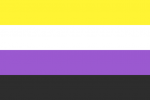 Nonbinary flag by Kye Rowan
Nonbinary flag by Kye Rowan
The nonbinary Pride flag was created by tumblr user Kye Rowan in 2014. The flag features four horizontal stripes representing being outside the binary (yellow), all genders (white), gender fluidity (purple), and agender (black). Nonbinary gender identity is an umbrella term that describes any gender identity that doesn’t fit into the gender binary of male or female. This flag is designed to represent those who identify as having no gender, fall on a gender spectrum somewhere between male and female, or identity as totally outside gender identities.
Two-Spirit Pride Flag
 Two-Spirit Flag by Dragon401k. Licensed under Creative Commons BY-SA 4.0
Two-Spirit Flag by Dragon401k. Licensed under Creative Commons BY-SA 4.0
While the term two-spirit was popularized in English beginning in the 1990s, it describes a variety of traditional roles of gender nonconforming individuals in many Native American communities. Representative of the diversity of the meanings of the term two-spirit and differing ceremonial practices, there are two designs for the two-spirit Pride flag. One design features a pair of black and white eagle feathers on the rainbow Pride flag background.
Another design features a medicine wheel of red, black, white, and yellow against the rainbow Pride flag background. This design, for example, was adopted by Queen City, British Columbia Pride celebrations, as “feathers were less relevant to [their] local Indigenous communities.”
We have touched on only a few of the dozens of Pride flag designs that are out there to rep all kinds of gender and sexual identities. While only two of them have received emoji status, it is striking how many of these flag designs were created by people who were simply searching for a flag that represents them. Just as these designs have evolved over time, it is likely that at least some of these flag designs will change again—becoming ever more inclusive and colorful!
